Located on both sides of the Bosphorus Strait, Istanbul sits at the meeting point of Europe and Asia. This unique setting has made it a crossroads of trade and culture for centuries. Today, it remains Turkey’s largest city and its economic and cultural heart. This guide will help you pick the best areas to stay in Istanbul for a perfect trip to the Gateway to the East.
Founded as Byzantium in the 7th century BCE, the city later became Constantinople, capital of the Roman and Byzantine Empires. In 1453, it was conquered by the Ottomans. This impressive history is reflected in its world‑famous landmarks such as Hagia Sophia, the Blue Mosque, and Topkapı Palace. Furthermore, the city’s bustling bazaars and ancient neighborhoods make it a must-visit for anyone interested in history.
Istanbul spreads across rolling hills and scenic waterfronts, with neighborhoods on both the European and Asian shores. It is often described in three main parts: the historic peninsula, the lively districts north of the Golden Horn like Beyoğlu, and the more laid-back Asian quarters. Bridges and ferries connect the two continents, making a trip across the water an easy—and often scenic—part of daily life.
With its combination of heritage, cuisine, and culture, Istanbul is one of the world’s most visited cities, drawing millions each year. It is also Turkey’s main business center and serves as the natural entry point to the country. Once here, getting around is straightforward thanks to an extensive network of metros, trams, buses, and ferries, making it easy to explore the best areas to stay in Istanbul.
The Best Areas to Stay in Istanbul: A Summary
If you don’t have the time or patience to read this article in full, here is a quick summary of our recommended areas to stay in Istanbul. Keep reading to find out more information about each district.
- Best area for sightseeing: Historic Peninsula
- Best area for business travelers: Şişli | Levent
- Best location for nightlife & food: Galata | Taksim
- Cheapest area to stay in Istanbul: Outer Fatih | Asian Side
- Most romantic area to stay: Beşiktaş
- Best location for shopping: Şişli
- Best location for LGBTQ+ travellers: Taksim | Beyoglu
What’s the best area to stay in Istanbul?

The best area to stay in Istanbul is the City Center, especially if you’re a first-time visitor. Istanbul’s Center, located on the European side, spans across the Bosphorus and is home to most of the city’s attractions, including Hagia Sophia, the Blue Mosque, Topkapi Palace, the Grand Bazaar, and Taksim Square. This ancient central district is also home to some of the best-rated hotels in Istanbul.
Find Available Accommodation in Istanbul’s City Center.
Best Hotels in Istanbul City Center
- Best five-star hotel: Four Seasons Hotel Istanbul at Sultanahmet
- Best four-star hotel: White House Hotel Istanbul
- Best three-star hotel: Basilissis Hotel
- Best budget hotel: Sirkeci Family Hotel & SPA
- Best B&B: Marmara Guesthouse
- Best hostel: Cheers Hostel
Where to Stay in Istanbul for Sightseeing, Nightlife & Business
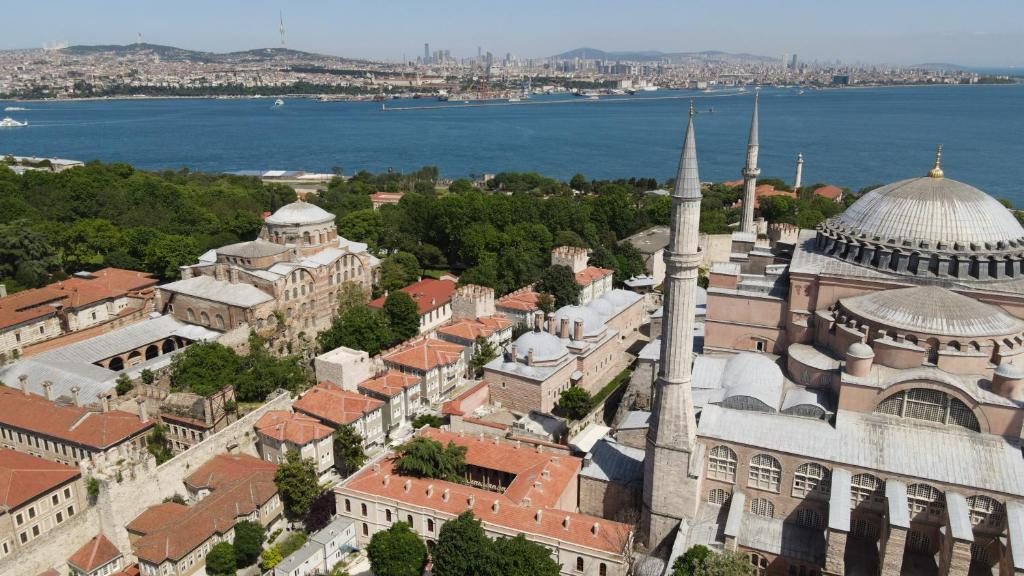
As mentioned above, Istanbul’s Centre is the best location for tourists in the Turkish metropolis. That said, the city center covers a massive area and can be divided into different (official and unofficial) districts, each with distinct flavors and attractions. These are some of the most exciting neighborhoods:
- At the heart of Roman and medieval Constantinople, Sultanahmet is located on the south shore of the Golden Horn. Home to many attractions, including Topkapi Palace, Hagia Sophia, the Blue Mosque, the Byzantine Hippodrome, and the Basilica Cistern, this historic area is also home to many of the best hotels in Istanbul, including the Hagia Sofia Mansions Istanbul and the Four Seasons Hotel Istanbul at Sultanahmet.
- On the north side of the Golden Horn lies the district of Beyoğlu. Historically known as Pera, this lively area is the city’s main entertainment and nightlife destination. Within Beyoğlu, there are three main subdistricts worth mentioning: Galata, Taksim Square, and Cihangir.
- The nearby district of Beşiktaş is home to the opulent 19th-century Dolmabahçe Palace and the Maritime Museum. This upscale area also houses some of the finest luxury and business-oriented hotels in Istanbul, including the Shangri-La Bosphorus and the Raffles Istanbul.
- Located inland, Şişli is another upmarket district with a famous nightlife scene. It is home to the Atatürk Museum and the imperial Ottoman Ihlamur Kasri Palace. Some of our favorite hotels in this area include The St. Regis Istanbul and the Renata Boutique Hotel Sisli.
- On the other side of the Bosphorus, Istanbul’s Asian Side offers a less touristy side of the city. This district, which includes lovely areas such as Kadıköy, Moda, and Üsküdar, offers luxury hotels like the Wyndham Grand Istanbul Kalamış Marina Hotel and some top-rated budget and mid-range properties such as My Dora Hotel.
The Ultimate Guide to the Best Areas to Stay in Istanbul: District by District
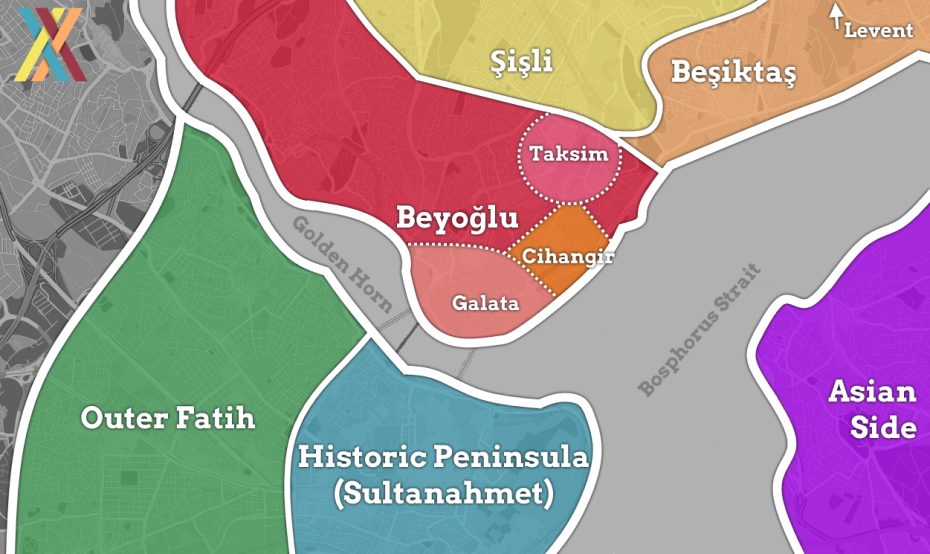
1. Historic Peninsula (Sultanahmet)
The best location in Istanbul for sightseeing
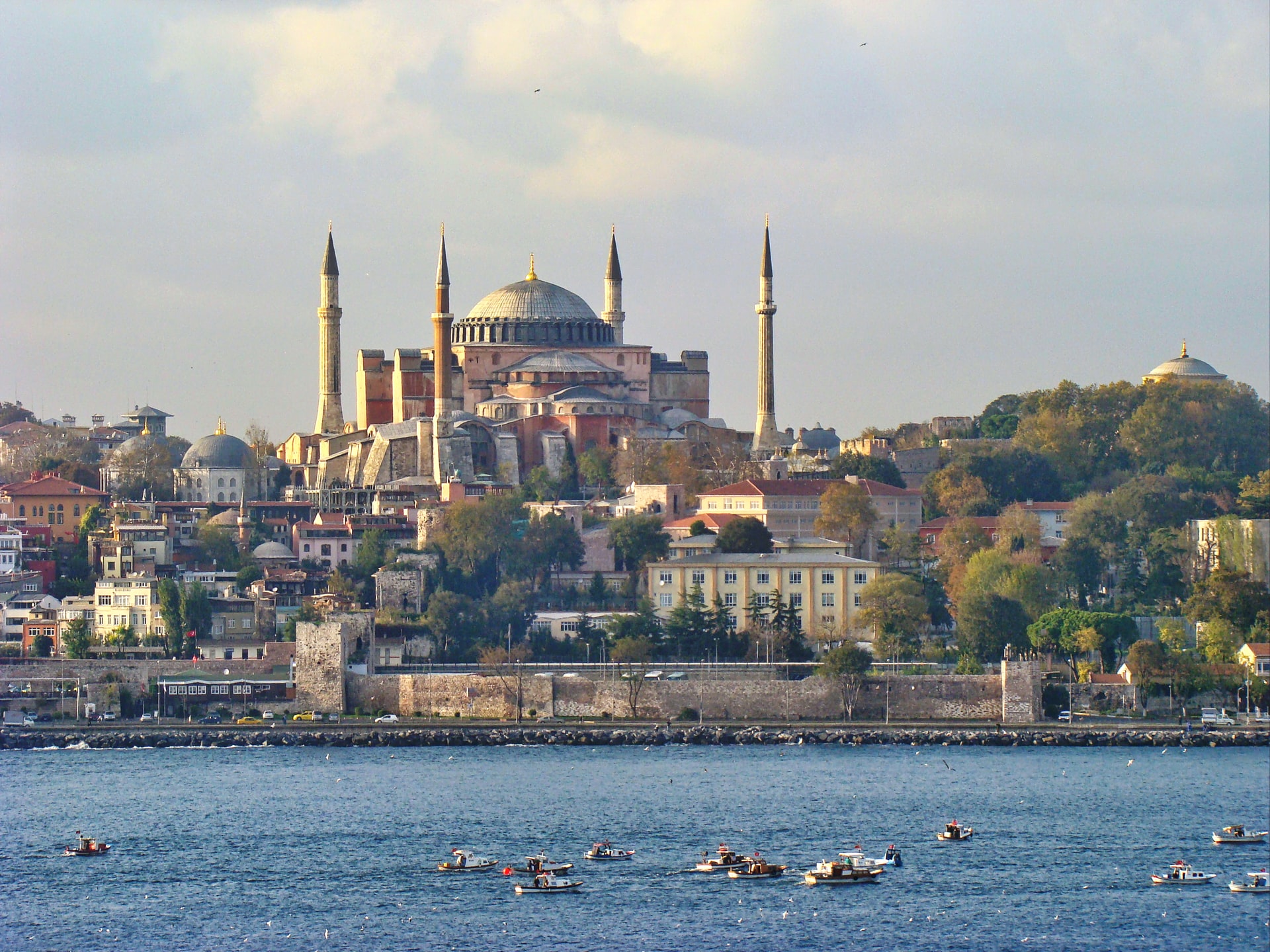
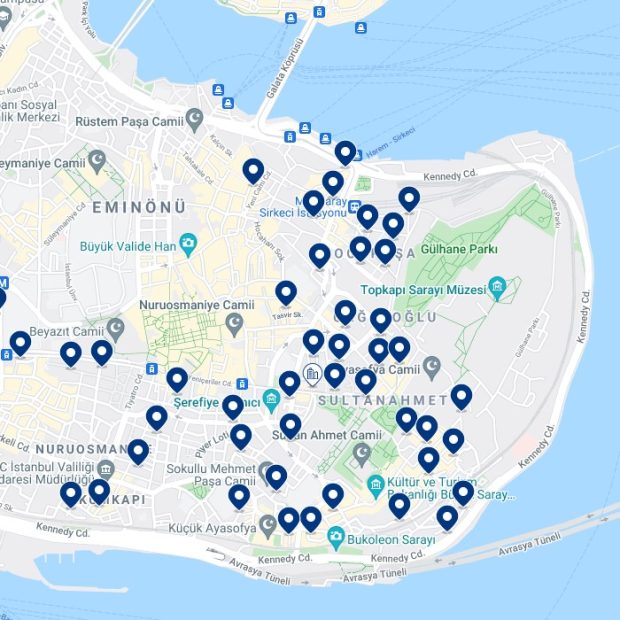
Located in Fatih, the Sultanahmet area is home to Istanbul’s most visited tourist attractions and the best district to stay in Istanbul for sightseeing.
-
Why is this the best area to stay in Istanbul, Turkey:
- Heart of the old city
- UNESCO World Heritage sites
- Roman, Byzantine and medieval buildings
- Grand Bazaar
- Hagia Sophia and Sultan Ahmet Mosque
- Topkapi Palace
- Boutique and luxury hotels
- Very well-connected through public transport
- Great shopping and food
Sultanahmet is the historical heart of ancient Constantinople. Set on the eastern tip of Fatih, this UNESCO-listed area occupies most of the peninsula south of the Golden Horn and is home to Istanbul’s most famous historic and cultural tourist attractions. Centered around Divan Yolu and Sultanahmet Square, this area offers the luxury of being within walking distance of most sights, making it a great area to stay in Istanbul for a short visit.
Perhaps the most well-known tourist attraction on the Istanbul Peninsula, Hagia Sophia is considered the pinnacle of Byzantine religious architecture. Built in 537 BCE on the foundations of a pagan temple as the patriarchal cathedral of Constantinople, it was the largest Christian church of the Eastern Roman Empire. After the fall of the city, it was converted into a mosque, then into a museum, and recently back into a mosque. The structure combines a longitudinal basilica and a centralized building with a 32-meter (100 ft) dome. Its interior is decorated with beautiful Byzantine frescoes and mosaics.
Not far away lies the gorgeous Sultan Ahmet Mosque. Also known as the Blue Mosque, this icon of Islamic architecture is famous for its profusely ornamented interior lined with over 20,000 handmade İznik-style ceramic tiles. Also in this area, you can find Topkapi Palace. Once the official residence of the sultan, this huge palace complex is now a museum exhibiting Ottoman treasures.
The Grand Bazaar, one of the largest and oldest covered markets in the world, is home to around 4,000 stalls selling traditional Turkish handicrafts, from rugs and carpets to lamps, ceramics, and jewels.
Sultanahmet is very well-covered by Istanbul’s public transport system. Metro lines 1 and 2, as well as the Marmaray commuter train, converge at the centrally located Yenikapı İstasyonu, making it easy to move to the north of the city and the Asian Side. Tramline T1 also crosses most of the district, connecting it to Galata and the west. Furthermore, if you want to take the scenic route, several ferry stations all over the peninsula offer boat connections across the Golden Horn, the Bosphorus Strait, and beyond.
Best Hotels in Sultanahmet, Istanbul
2. Galata & Karaköy
The best areas to stay in Istanbul for foodies & art lovers
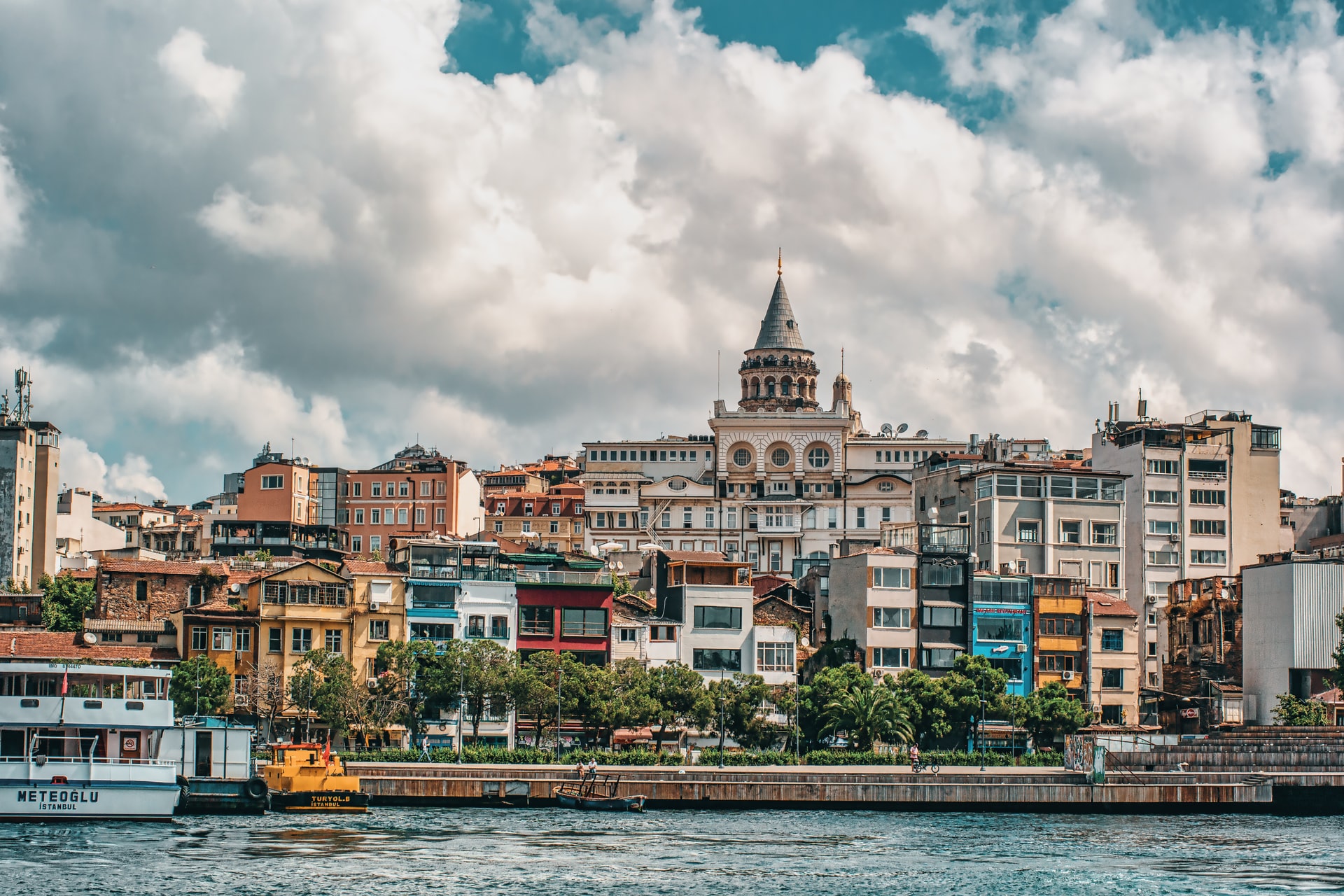
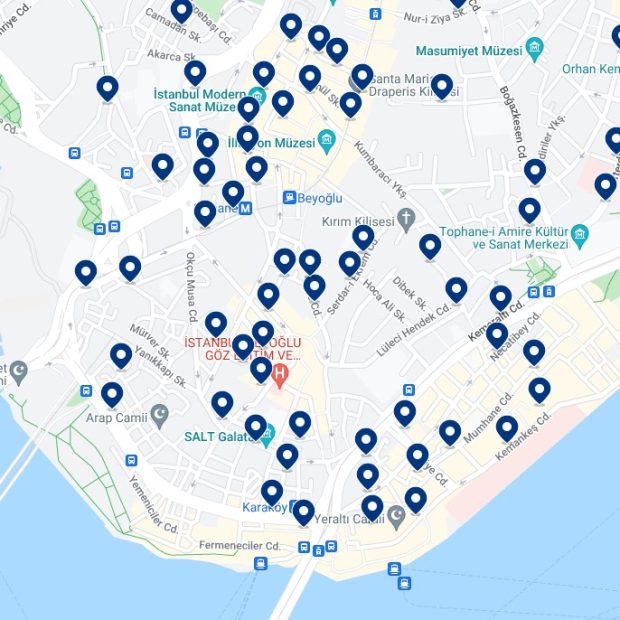
Easily recognizable thanks to its tower, Galata & Karaköy are exciting areas, full of small shops, cafés and restaurants.
-
Why is this the best area to stay in Istanbul, Turkey:
- Galata Tower
- Exciting nigtlife and food scene
- Young, vibrant neighbourhoods
- Connected via public transport
- Excellent views of the Sultanahmet peninsula
- Topkapi Palace
- Great hotel offer
- Very centrally-located
Historically, Galata was a separate town located at the doorstep of mighty Constantinople, home to the city’s main Jewish Quarter. During the Middle Ages, Galata became a colony of the Republic of Genoa. The area’s main features, the citadel and Galata Tower, were built during Genoese rule.
Located north of the Golden Horn and connected to the Historic Peninsula by bridges and ferries, today, Galata is part of the larger Beyoğlu district, which also includes the neighboring Karaköy area.
The area’s skyline is dominated by the Galata Tower, a 67-metre-tall defensive structure built in 1348 to defend the Genoese colony of Constantinople. The tallest building in the city at the time of its completion, the Galata Tower has served many purposes during its centuries-old history: a military watchtower, a fire prevention lookout, a jail, and currently a museum, events venue, and tourist attraction.
Other than its eponymous tower, the Galata district is home to many historical and religious sights, including the Byzantine Church of San Domenico (nowadays Arap Mosque), the Church of Saint Benoit, the Church of Saints Peter and Paul, and St. George’s Austrian High School. As Istanbul’s historically Jewish district, Galata is also the site of many synagogues, namely the Zülfaris, Ashkenazi, Italian, and Neve Shalom synagogues, as well as the Museum of Turkish Jews.
Meanwhile, nearby Karaköy evolved from a busy port area in the Middle Ages to the city’s main financial district in the 19th century. While most banks and offices have moved northward to Levent, Karaköy has reinvented itself as a cultural and entertainment powerhouse, home to institutions such as SALT Galata, a thriving arts space in the former Ottoman Bank headquarters.
Nowadays, both Galata and Karaköy are considered the city’s creative hubs and hipster areas and are packed with small cafés, alternative bars, international and traditional restaurants, and some of the best-rated boutique hotels in Istanbul.
The area offers many transportation options, including ferry stations, a funicular line, and a few tram (T1-T2) and metro (M2) stops.
Best Hotels in Galata, Istanbul
3. Taksim
Best area to stay in Istanbul for nightlife
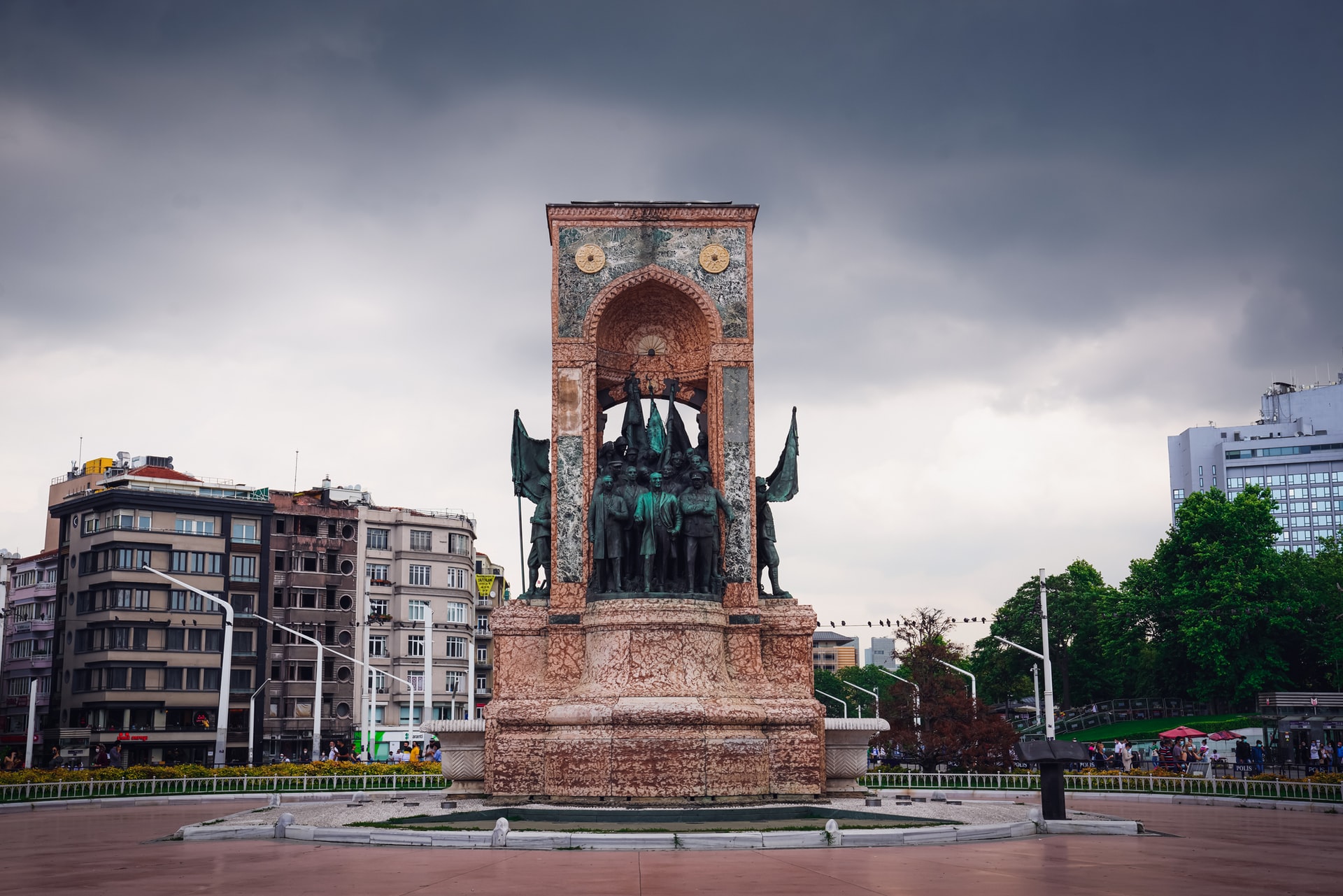
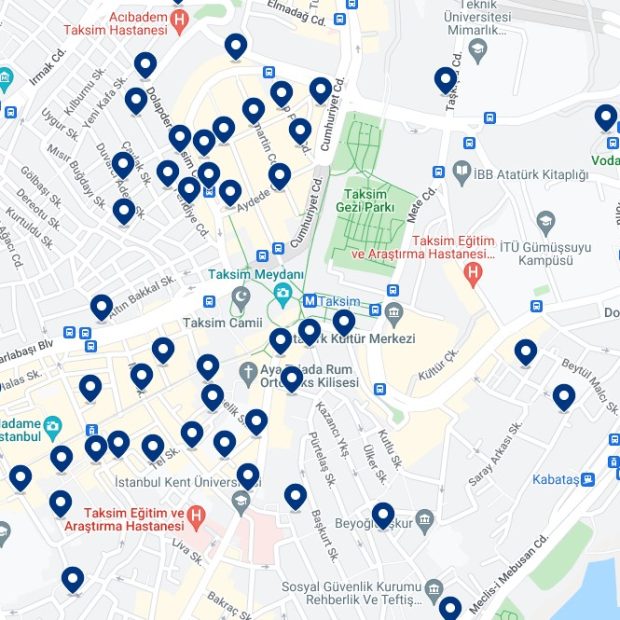
With Taksim Square at its centre, Taksim is a vibrant nightlife, shopping and dining area within the Beyoglu district.
-
Why is this the best area to stay in Istanbul, Turkey:
- Super central
- Great nigtlife and food scene
- Taksim Square
- Very well-connected through public transport
- Close to Galata & Sultanahmet
- Ataturk Cultural Centre
- Diverse hotel offer
As Istanbul expanded, its city center moved northward from the Historic Peninsula to the Beyoğlu district, north of the Golden Horn.
Centered around the namesake square, the development of this area dates back to the 18th century, during the late Ottoman period, when it served as the city’s main reservoir and water distribution center (Taksim means “distribution” in Turkish). In the late 19th century, the whole distribution concept took new life with the opening of the first underground railway line and the plans to make Taksim Square the central station of the Istanbul Metro network.
Since 1928, when Pietro Canonica’s Republic Monument was unveiled, Taksim Square has become Istanbul’s main public space, where local celebrations, events, and civic protests take place.
Nowadays, Taksim is considered the heart of modern Istanbul and a major food and nightlife destination. The square marks the beginning of Istiklal Caddesi, a long, pedestrianized avenue with dozens of shops, restaurants, cafés, bars, and international fast-food chains.
The iconic Ataturk Cultural Center, located on the square, is a multi-purpose cultural center and opera house. Other tourist attractions nearby include the Taksim Mosque, Taksim Gezi Park, Madame Tussauds Istanbul, and the Istanbul Cinema Museum.
As a whole, Taksim is one of the most visited districts in the city. The area is also home to many of the city’s 5-star hotels, including The Marmara Taksim, Sofitel Istanbul Taksim, and the Gezi Hotel Bosphorus, as well as many budget and mid-range properties.
Best Hotels in Taksim, Istanbul
4. Pera & Beyoglu
A historic area on the European Side
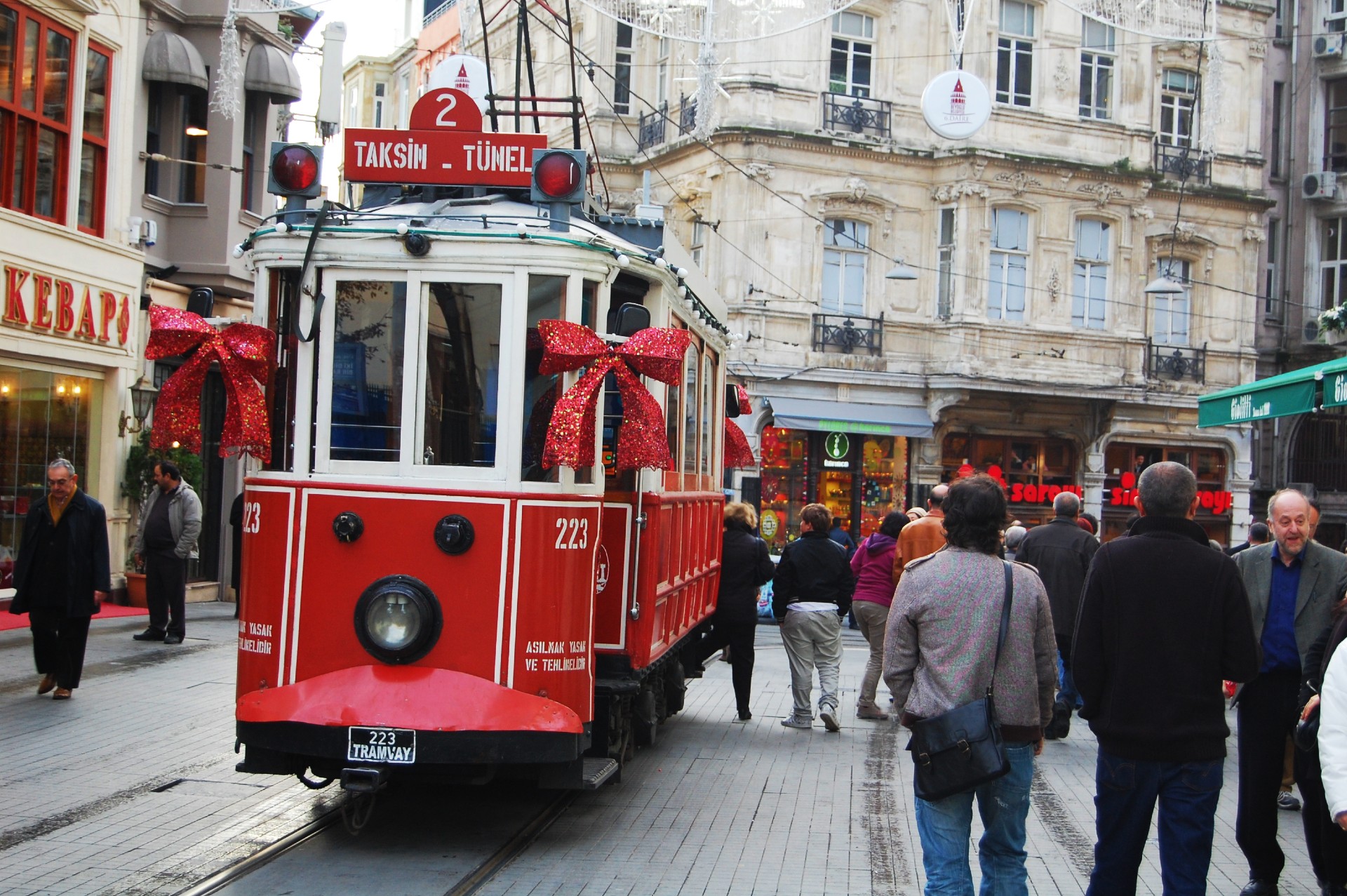
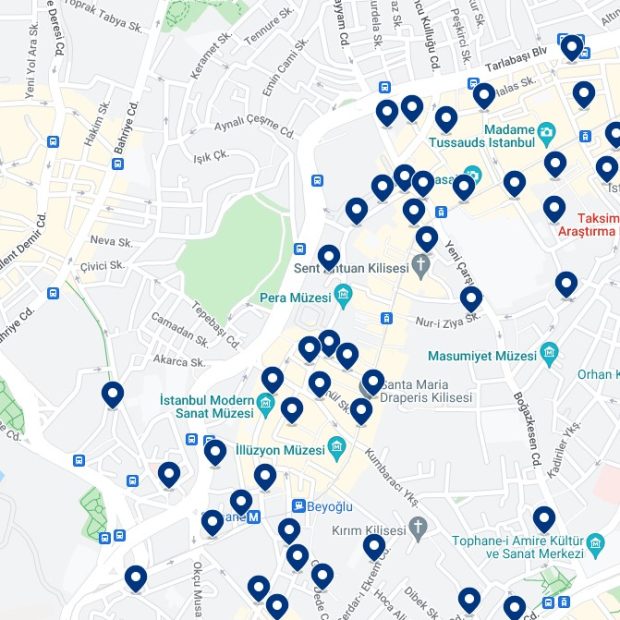
Located north of the Golden Horn, Pera offers a glimpse into the grandeur of 19th-century Istanbul.
-
Why is this the best area to stay in Istanbul, Turkey:
- Heart of the European Side
- 19th and early 20th-century architecture
- Historic tram
- Very well-connected through public transport
- Istiklal Caddesi
- Cicek Pasaji
Following İstiklâl Caddesi to the south, and sandwiched between Galata and Taksim, you’ll find the historic Pera area.
Originally an independent region next to the town of Galata, historic Pera is now part of (and sometimes used to refer to the whole of) the district of Beyoğlu.
Traditionally, Pera was Istanbul’s diplomatic quarter, and many of its original grand palaces and mansions, including the former Italian, British, Swedish, and Dutch embassies, are still in use (as consulates) to this day.
The historic tram line T2 runs along İstiklâl Caddesi, which is also lined with Neoclassical, Beaux-Arts, and Art Nouveau buildings, giving the area a very distinct turn-of-the-century European atmosphere. Çiçek Pasajı (Cité de Péra), a late 19th-century shopping gallery designed after the Galleria Vittorio Emanuele II in Milan, is home to many historic cafés, restaurants, and boutiques.
Other cultural attractions in the area include the Pera Museum, an art institution focused on Orientalism in 19th-century art, the Istanbul Museum of Modern Art, and the Historical Galatasaray Bath.
Further west, along the Golden Horn coast, there are other relevant Istanbul sights, including the Rahmi M. Koç Museum, dedicated to cars and transportation, the Ottoman-era Aynalıkavak Kasrı, and the Kizilay Square Baths.
Beyoğlu is well-connected to the rest of Istanbul through an extensive public transportation network, including metro, tram, funicular stations, ferries, and buses.
Best Hotels in Pera, Istanbul
5. Besiktas
Best location for a romantic trip or honeymoon

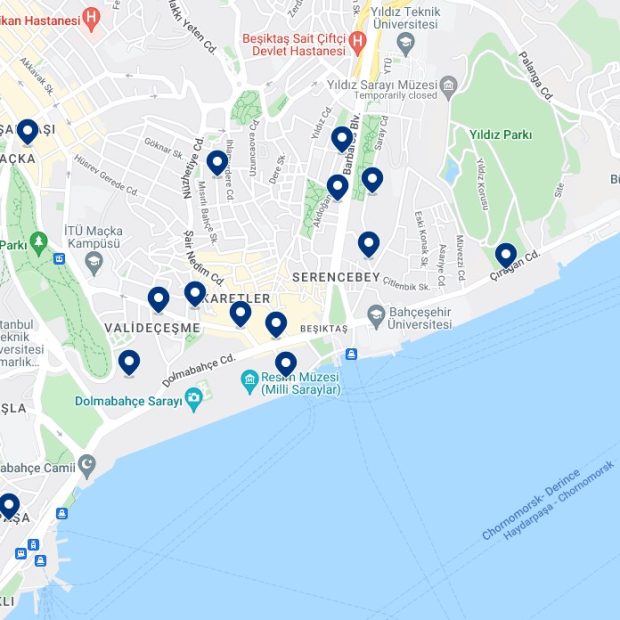
Overlooking the Bosphorus, Beşiktaş is a charming and affluent area home to palaces, parks and the Fishermen’s Market.
-
Why is this the best area to stay in Istanbul, Turkey:
- Dolmabahçe Palace
- Fishermen’s Market
- Romantic views over the Bosphorus
- Luxury & boutique hotels
- Good restaurant scene
- Ferry hub
Waterside Beşiktaş is one of Istanbul’s oldest districts. It is located northeast of Beyoğlu, on the European Side.
Home to some of the city’s fanciest residential neighborhoods, Beşiktaş is also an important business, shopping, educational, and historic area, and offers scenic views of the Bosphorus Strait.
The biggest attraction in the area is, by far, the Dolmabahçe Palace. With an area of around 45,000 m2 (485,000 sq ft), Dolmabahçe is the largest palace in Turkey. This massive and opulent complex served as an administrative center of the Ottoman Empire up until the abolition of the Caliphate in 1924. After the founding of the Turkish Republic, it was used as a summer residence. President Mustafa Kemal Atatürk died here in 1938.
Other attractions in Beşiktaş include the lively Fishermen’s Market, Ihlamur Pavilion, and the Maritime Museum. The scenic Yıldız Park, located between the palaces of Yıldız and Çırağan, is one of the city’s most popular green spaces.
The Beşiktaş district is also home to an important ferry hub connecting various neighborhoods on the Asian Side. This lovely neighborhood is also home to some of the best-rated hotels in Istanbul, including the Four Seasons Hotel Istanbul at the Bosphorus, Swissotel The Bosphorus, Shangri-La Bosphorus, and Çırağan Palace Kempinski.
Best Hotels in Besiktas, Istanbul
6. Cihangir
A cosmopolitan & bohemian area to stay in Istanbul

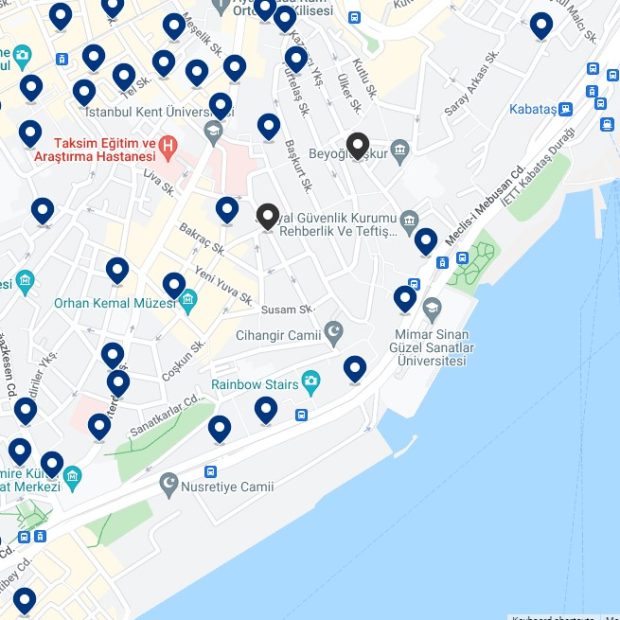
Located near Galata and Taksim, the Cihangir area is known for being home to a thriving artistic & bohemian community.
-
Why is this the best area to stay in Istanbul, Turkey:
- Very central
- Bohemian and artistic scene
- Cihangir Mosque
- Very well-connected through trams & funiculars
- Cosmopolitan Turkish and ex-pat community
- Best area for cat lovers
Named one of the five best places in the world to live by The Guardian, Cihangir is a neighbourhood in the Beyoğlu district.
It is located on the southeast end of Beyoğlu, sandwiched between Galata, Karaköy, and Taksim. In the late 19th century, it was one of the main areas where non-Muslim (mainly European) citizens settled. Even today, the area is home to an important community of expatriates. As such, Cihangir is one of the most diverse and cosmopolitan areas in Istanbul.
The area is home to many cafés, art galleries, and small shops, and still retains a bohemian and artistic atmosphere.
Perhaps more importantly, this neighborhood is famous for its street cats, which are cared for by the local residents.
Some of the attractions in this hipster-friendly area of Istanbul include the Cihangir Mosque and the Rainbow Stairs.
Best Hotels in Cihangir, Istanbul
7. Sisli
The best location for shopping & business travelers
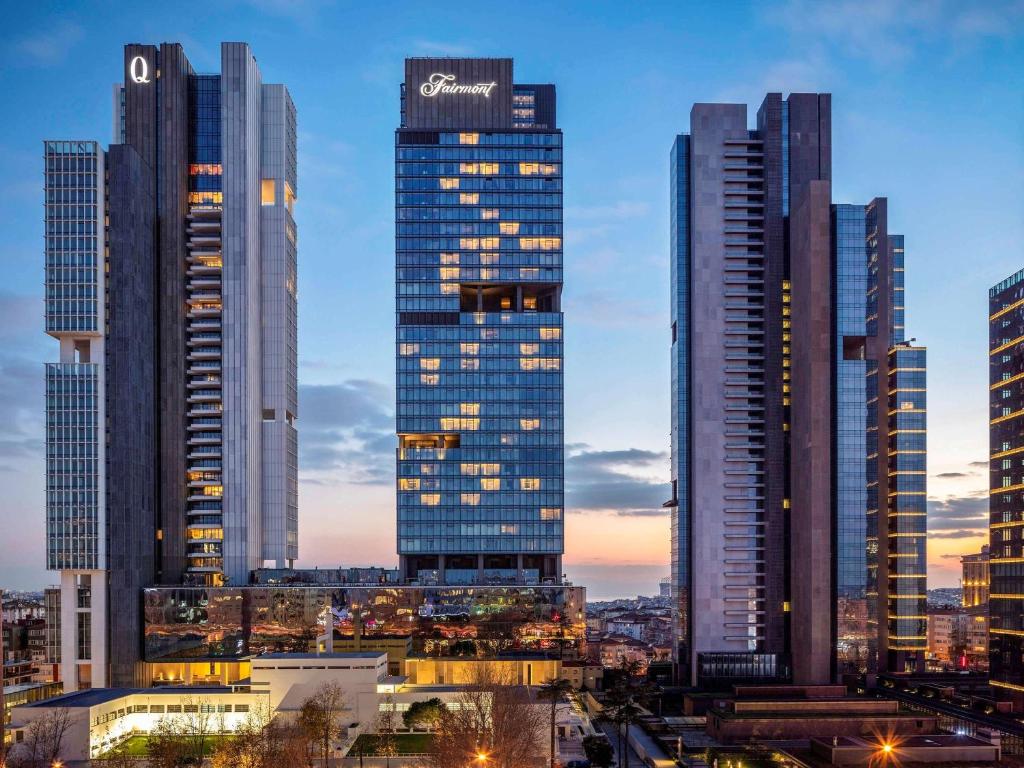
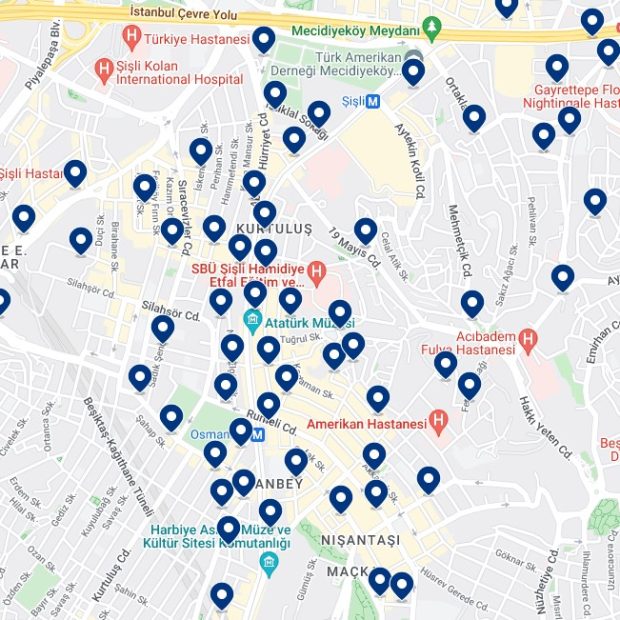
Home to shopping centers & shiny skyscrapers, Şişli presents Istanbul’s most modern facet.
-
Why is this the best area to stay in Istanbul, Turkey:
- Best area for business travelers
- Şişli Mosque
- Cevahir İstanbul shopping center
- Very well-connected through public transport
- Atatürk Museum
- Luxury shops and hotels
Located inland and surrounded by the aforementioned districts of Beşiktaş and Beyoğlu, Şişli is one of Istanbul’s main shopping and business districts.
Mainly developed during the late 19th and early 20th century, Şişli was a predominantly residential and middle-class neighborhood. This all changed in the 1970s when new office towers and commercial developments started sprouting along its main avenues, transforming some of its areas, like Mecidiyeköy and Esentepe, into the city’s Central Business District.
Nişantaşı, located on Şişli’s southern end, is one of Istanbul’s most luxurious residential and shopping districts, home to a large number of fashion shops, department stores, cafés, pubs, restaurants, and nightclubs.
Şişli is also home to Cevahir İstanbul, Europe’s largest and the world’s second-largest shopping mall. Other attractions in the area include the Atatürk Museum and Ihlamur Palace.
Best Hotels in Sisli, Istanbul
8. Levent
Istanbul’s new financial & business district
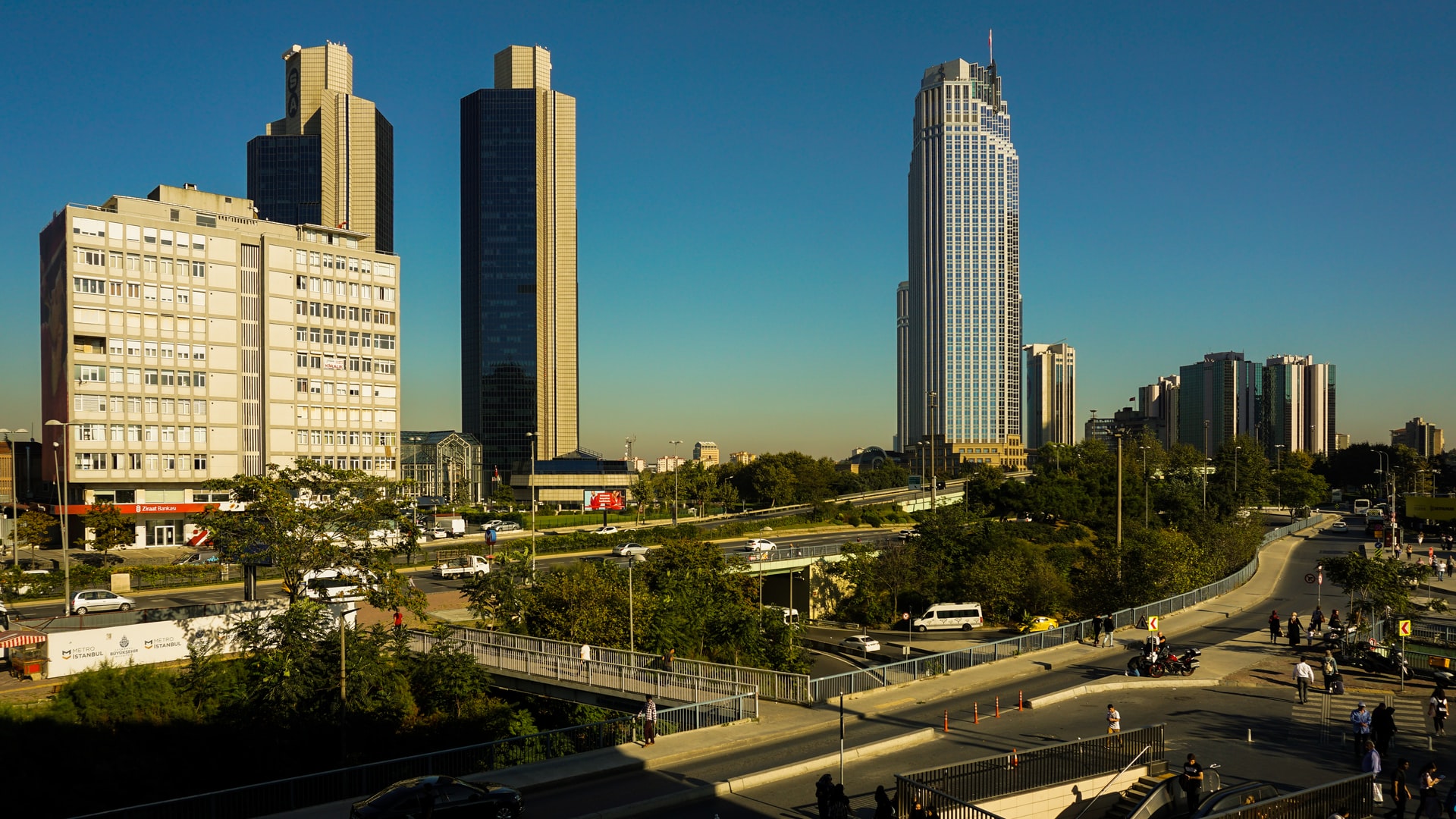
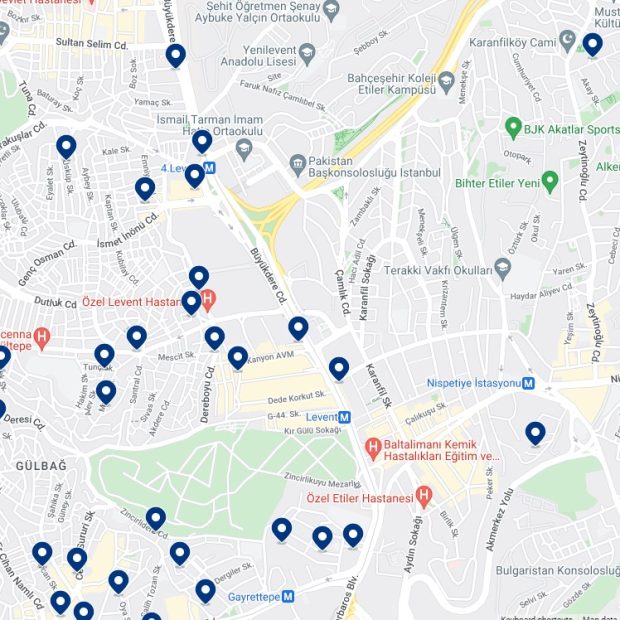
Towering Levent is a great area to stay in Istanbul for business travelers and those who don’t mind being away from the city center.
-
Why is this the best area to stay in Istanbul, Turkey:
- Great area for business travelers
- Istanbul Sapphire
- Business hotels
- Connected through metro
Home to some of the tallest skyscrapers in Europe, Levent is Istanbul’s up-and-coming financial district.
Part of the municipality of Beşiktaş, Levent is located some 8 kilometers (5 miles) north of Taksim Square, on the European Side.
Levent is home to the tallest skyscraper in Istanbul and Turkey, the 54-floor Istanbul Sapphire. The area also hosts numerous new, business-oriented hotels by local and international chains.
Metro station Levent (M2) serves the business district and its surrounding neighborhoods.
Best Hotels in Levent, Istanbul
9. Outer Fatih
Cheapest area to stay in Central Istanbul
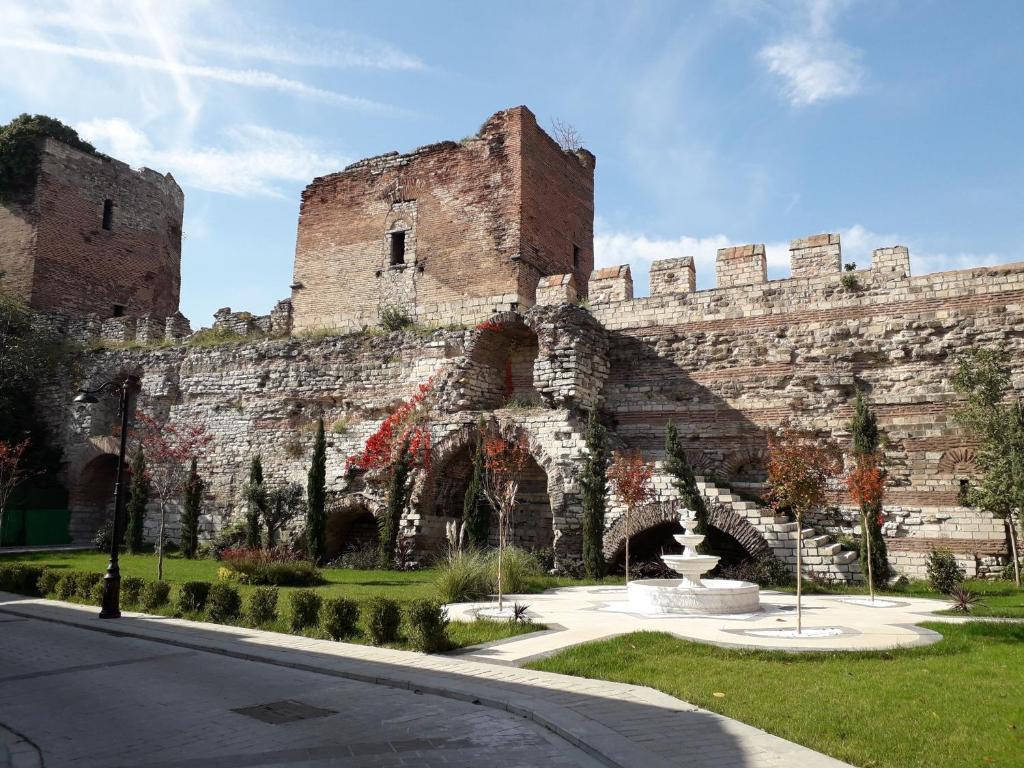
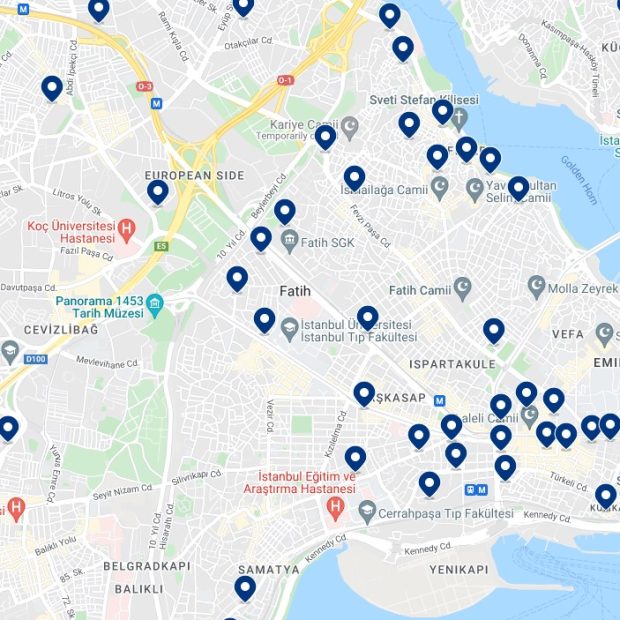
Located between the Wall of Constantine and the Wall of Theodosius, Outer Fatih offers a collection of historic districts and off-the-beaten-path attractions.
-
Why is this the best area to stay in Istanbul, Turkey:
- Local atmosphere
- Cheap hotels
- Wall of Theodosius
- Near the Historic Peninsula
As we previously mentioned, the district of Fatih encompasses Istanbul’s historic area, roughly matching the extension of the walled city of Constantinople.
Its easternmost part, the Historic Peninsula (Sultanahmet), is home to the city’s most famous religious, historic, and tourist attractions. The area between the original wall and the Theodosian wall, Outer Fatih, has a local flavour, cheaper hotels and restaurants, and many tourist attractions of its own.
The Walls of Constantinople are considered the last great fortification system of antiquity, and one of the most complex defensive complexes ever built. Erected between the 2nd and 5th centuries CE, these fortifications saved the city on numerous occasions and cemented its reputation as an impregnable fortress well into the 15th century, when it fell to Ottoman Sultan Mehmed II in 1453.
Most of the attractions in Outer Fatih can be found near the walls. On its northwestern end, near the Golden Horn, lie the ruins of the stunning Palace of the Porphyrogenitus, a late 13th-century palace and the best-preserved example of late Byzantine secular architecture to survive to our days. Not far, the Church of the Holy Saviour is a medieval Greek Orthodox church recently turned (for the second time) into a mosque. The Panorama 1453 History Museum dives into the history behind the Fall (or rather the Conquest) of Constantinople by the Ottomans, and the Yedikule Dungeons Museum offers a look into a royal prison from the 15th century.
Other than its abundance of mid-range and budget hotels, another great thing about choosing Fatih for an Istanbul holiday is how well-connected it is. Its southern portion is crossed by the Marmaray suburban line, which connects with metro lines M1 and M2 and several ferry lines at Yenikapı Station. Furthermore, Tram route T1 runs through the middle of the district and T4 offers a few stops along the Theodosian wall area.
Best Hotels in Fatih, Istanbul
10. Asian Side
An off-the-beaten-path area to stay in Istanbul
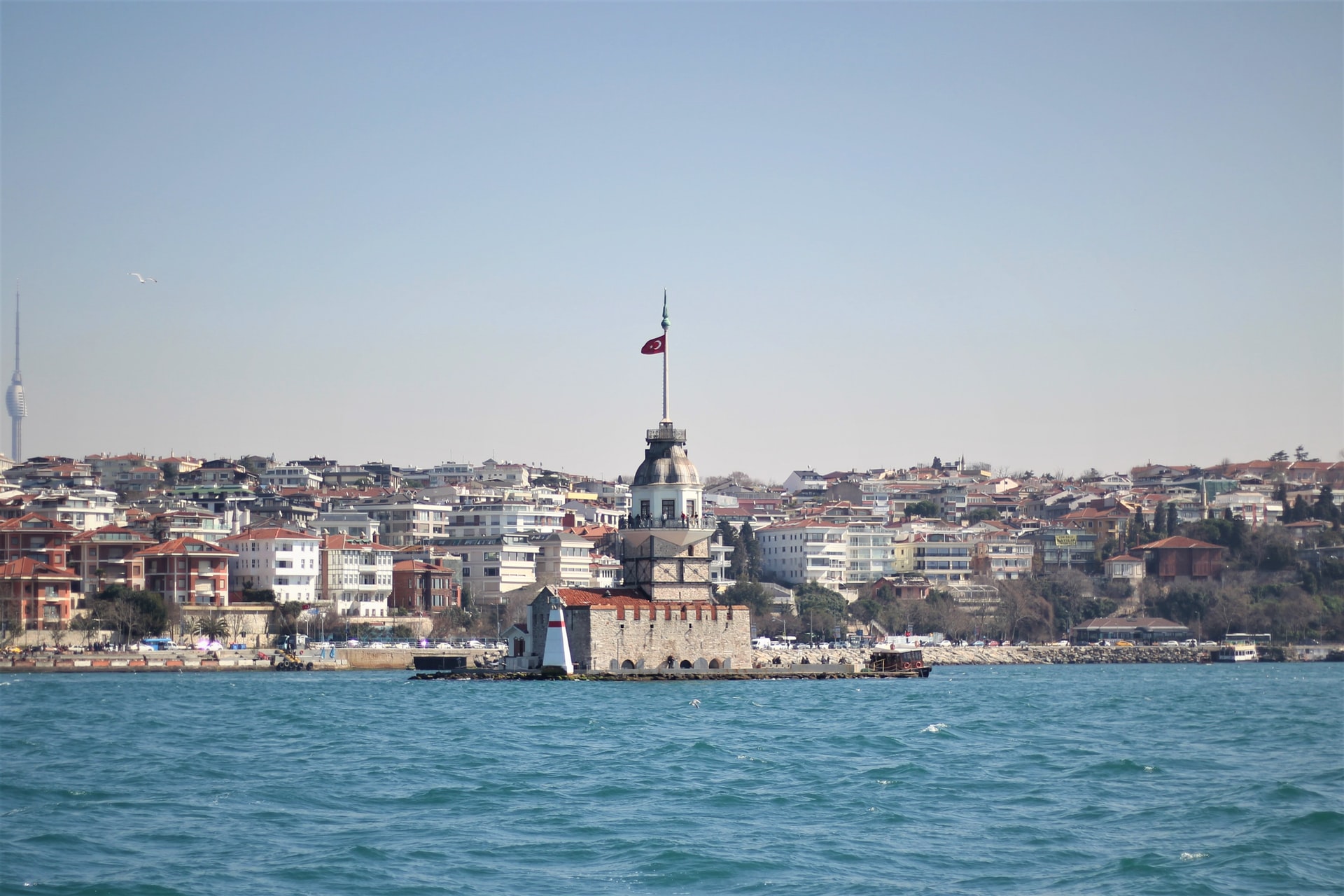
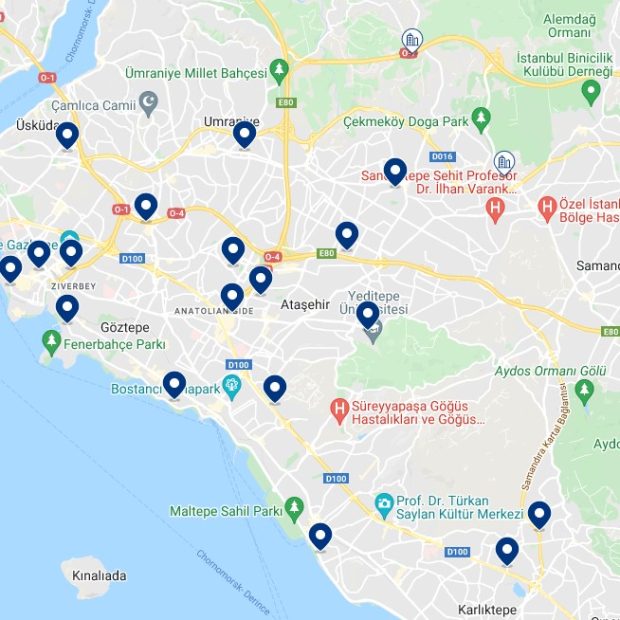
Often overlooked by tourists, Istanbul’s Asian Side has a lot to offer.
-
Why is this the best area to stay in Istanbul, Turkey:
- Local atmosphere
- All kinds of hotels
- Connected through metro and ferry
Straddling between Europe and Asia, Istanbul is the only bi-continental metropolis in the world. Located across the Bosphorus, the Asian, or Anatolian Side is actually a massive collection of distinct smaller districts. While this expansive area offers as much diversity and excitement as its European counterpart, this section of Istanbul is often overlooked by visitors.
With several tourist attractions, including the opulent Beylerbeyi Palace, 16th-century Şemsi Paşa mosque, and the picturesque Maiden’s Tower, Istanbul’s Asian side is also about its vibe.
The Asian side is also home to two of the most exciting Istanbul districts: Kadıköy and Moda.
Kadıköy, which traces its roots to the Greek settlement of Chalcedon in 685 BCE, is known for its winding streets, markets, urban art, and shopping streets. Home to Antique Street (Tellalzade Sk.), the area is a hotspot for antique hunters and thrift shoppers. Meanwhile, Bagdat Avenue is considered the Champs-Élysées of Istanbul, where you’ll find luxury designer brands along with well-known high-street fashion stores.
Moda, on the other hand, is known for its food scene. Home to some of the most authentic Turkish restaurants and bakeries in town, this is the place to go for a typical Turkish breakfast and coffee.
The Istanbul metro and suburban train network connect the Anatolian and European sides, and the whole coastal area is dotted with dozens of ferry stations.
Best Hotels on the Asian Side
11. Around Istanbul Airport (IST)
Best location during a layover
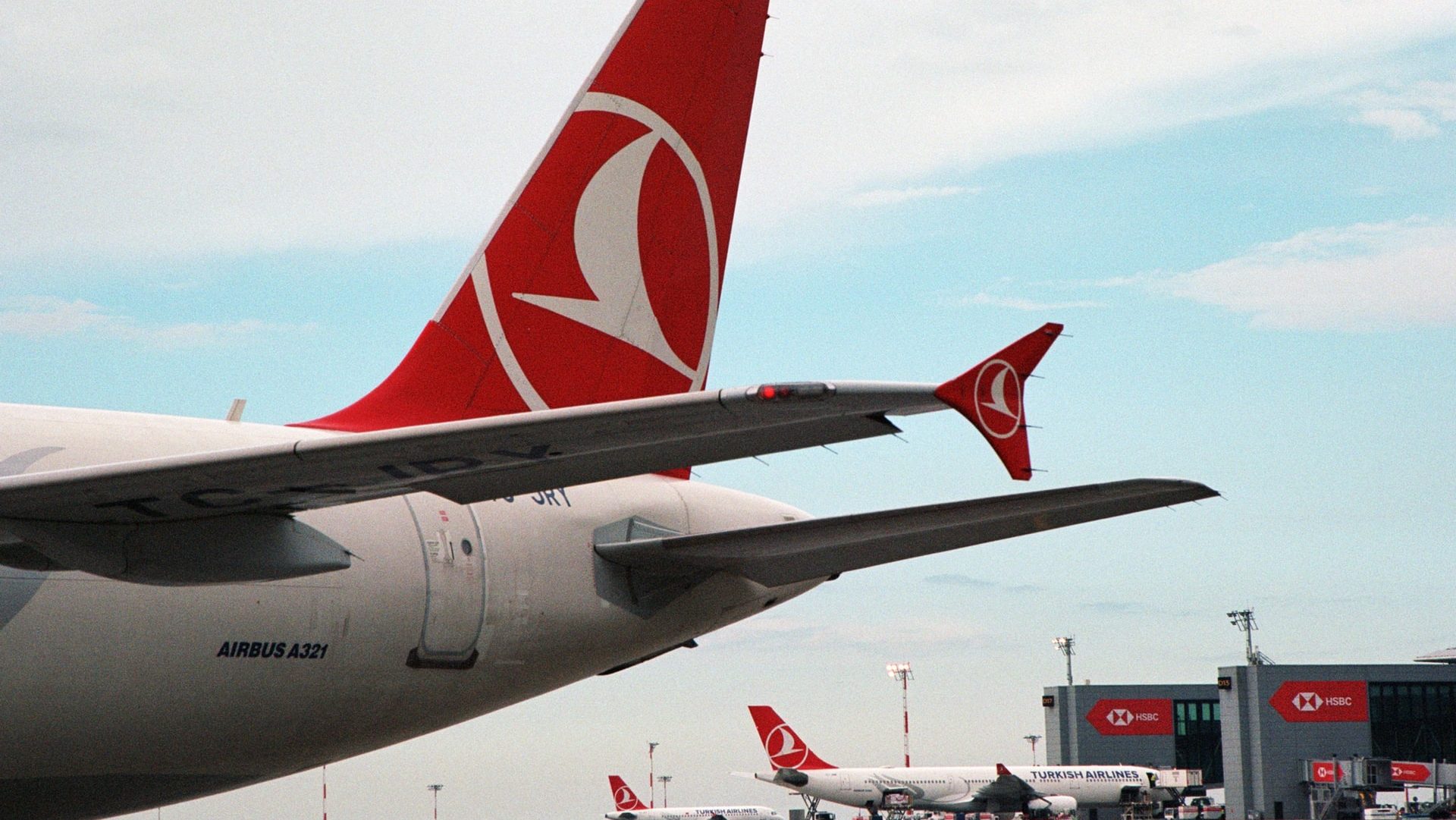
The area around Istanbul Airport is the best location for passengers on a layover.
Istanbul Airport, Turkey’s busiest airport, is located northwest of the City Center, on the European side. IST is the main hub for Turkish Airlines
Istanbul Airport (IST) is located about 40 kilometers (25 miles) northwest of the city center in the Arnavutköy district. Opened in 2018, it quickly became one of the busiest airports in the world. It serves as Turkey’s main international gateway and a major hub for Turkish Airlines, and most domestic and international carriers, with the notable exception of Pegasus Airlines, operate there.
The airport has direct connections to cities across Europe, Asia, the Americas, and Africa, making it a convenient entry point for international travelers. Within Turkey, IST offers frequent domestic flights to destinations like Ankara, Izmir, Antalya, and Cappadocia. Ground transport into the city includes taxis, airport buses, and a newly opened metro line (M11) that links directly to major transfer hubs, reducing travel time.
The area around the airport is primarily industrial and residential, with limited tourist attractions. Accommodation options here mostly cater to transit passengers, business travelers, or those with early flights. Hotels range from international chains with shuttle services to smaller local properties. While staying near the airport is not ideal for sightseeing, it can be practical for short stopovers or business trips where proximity to flights is a priority.
Best Hotels near Istanbul Airport (IST)
12. Around Sabiha Gokcen Airport (SAW)
Best location for a layover if you’re flying Pegasus

The area around Sabiha Gokcen Airport is the best location for Pegasus passengers on a long stopover.
Sabiha Gökçen International Airport (SAW) is situated on the Asian side of Istanbul, about 35 kilometers (22 miles) southeast of the city center in the Pendik district. Opened in 2001, it was originally designed to ease congestion at Istanbul’s main airport and has grown into a major hub for low-cost carriers, most notably Pegasus Airlines.
SAW handles a large number of domestic flights as well as international services to Europe, the Middle East, and parts of Asia. Transport links to central Istanbul include shuttle buses, taxis, and the M4 metro line, which connects to Kadıköy and other key points on the Asian side.
The surrounding area is mainly suburban, with some commercial developments and residential neighborhoods. Hotels here are typically used by passengers with early or late flights, airline crews, or business travelers attending meetings in the eastern districts of Istanbul. While it is not a base for exploring the city’s main attractions, staying near SAW can be convenient for those focusing on the Asian side or catching flights to regional destinations.
Best Hotels near Sabiha Gokcen Airport (SAW)
Finding the Best Places to Stay in Istanbul: Useful Information
When it comes to location, Istanbul sits in northwestern Turkey, straddling the Bosphorus Strait and uniting Europe and Asia in a way no other city can. It is bordered by the Sea of Marmara to the south, the Black Sea to the north, and is within reach of other major Turkish destinations like Ankara and Bursa. Although not the capital, Istanbul is the country’s largest city and its main economic, cultural, and historical hub.
With more than 15 million residents spread over roughly 5,343 km² (2,062 mi²), Istanbul is a vast, multi-layered metropolis. Its terrain is a mix of rolling hills and waterfront plains, and this varied topography can influence how easily you get around. Bridges, tunnels, and ferries connect districts on the European and Asian sides, but some hilly neighborhoods may require more walking and careful transport planning.
Founded in the 7th century BCE as Byzantium, the city became Constantinople when it was named the capital of the Roman Empire in 330 CE. It later served as the heart of the Byzantine and Ottoman Empires, leaving behind a skyline filled with domes, minarets, palaces, and bazaars. These layers of history are visible not only in the architecture but also in the cuisine, music, and daily life.
Key attractions range from the monumental Hagia Sophia, the elegant Blue Mosque, and the opulent Topkapı Palace to the bustling Grand Bazaar, contemporary art museums, vibrant nightlife in Beyoğlu, and scenic ferry rides across the Bosphorus. The appeal lies in its mix of the ancient and modern, where centuries-old markets operate alongside trendy cafes and galleries.
Most visitors arrive by air, landing at either Istanbul Airport (IST) on the European side or Sabiha Gökçen (SAW) on the Asian side. IST is a major international hub located about 40 km (25 miles) from the city center, while SAW serves many regional and low-cost flights. The city is also accessible by intercity trains, long-distance buses, and ferries from other parts of Turkey and neighboring countries.
The city’s layout is often understood in broad sections: the historic peninsula with its concentration of landmarks; the northern European-side districts like Beyoğlu and Şişli, home to shopping and nightlife; and the Asian-side neighborhoods such as Kadıköy and Üsküdar, known for their local markets and relaxed pace. History lovers often base themselves in Sultanahmet, while business travelers might choose Levent or Maslak, and arts-focused visitors gravitate toward Karaköy and Galata.
Getting around is relatively straightforward thanks to an integrated network of metro lines, trams, buses, funiculars, and ferries. Many key sights are within walking distance of each other in the historic center, and it’s entirely possible to explore without a car. Istanbulkart, a reloadable transport card, works across almost all public transport modes.
For trip length, a short visit of two to three days allows for highlights in the historic peninsula and a Bosphorus cruise, while a long weekend adds time for the Asian side. A week or more lets you explore neighborhoods in depth and take day trips to places like the Princes’ Islands. For shorter stays, staying central minimizes travel time; for longer visits, splitting your time between the European and Asian sides offers a broader perspective.
The best times to visit are spring (April–June) and autumn (September–October), when temperatures range from about 15°C to 25°C (59°F to 77°F) and the city is lively without being overly crowded. Summers can be hot and humid, with highs over 30°C (86°F), while winters are chilly and damp, averaging 5°C to 10°C (41°F to 50°F). Prices for accommodation peak during major holidays and events, so booking ahead is wise.
Istanbul suits many types of travelers: culture enthusiasts drawn to historic sites and museums, food lovers eager to sample street eats and fine dining, nightlife seekers enjoying bars and clubs along İstiklal Avenue, and digital nomads finding inspiration in its cafes and co-working spaces. Families appreciate the parks, aquariums, and kid-friendly museums, while shoppers can browse everything from designer boutiques to traditional crafts.
Accommodation ranges from budget hostels and guesthouses to mid-range hotels, serviced apartments, and boutique stays in restored Ottoman buildings. Nightly rates vary widely—budget beds can start under $20 in low season, while luxury hotels easily surpass $300 in peak months. Booking early, especially for spring and autumn, and considering areas just outside the historic center can help save money. Knowing the best areas to stay in Istanbul will make your trip smoother, more enjoyable, and better tailored to your interests.
Where to Stay in Istanbul: A Personal Take
During my last trip to Istanbul, I stayed at The Trinity Hotel Taksim. The hotel offered a comfortable stay with clean rooms and friendly staff. It was conveniently located, making it easy to explore the bustling life of Taksim Square and nearby attractions. Like a city straddling two continents, this hotel strikes a fine balance between luxury and budget. It was a comfortable yet affordable stay.
I found Taksim to be an excellent base for sightseeing, with its vibrant streets filled with shops, cafes, and cultural sites. It’s a place where the city’s energy is palpable at all hours. However, my next visit will definitely include staying on the Asian side of Istanbul; I’m excited to experience its charm.
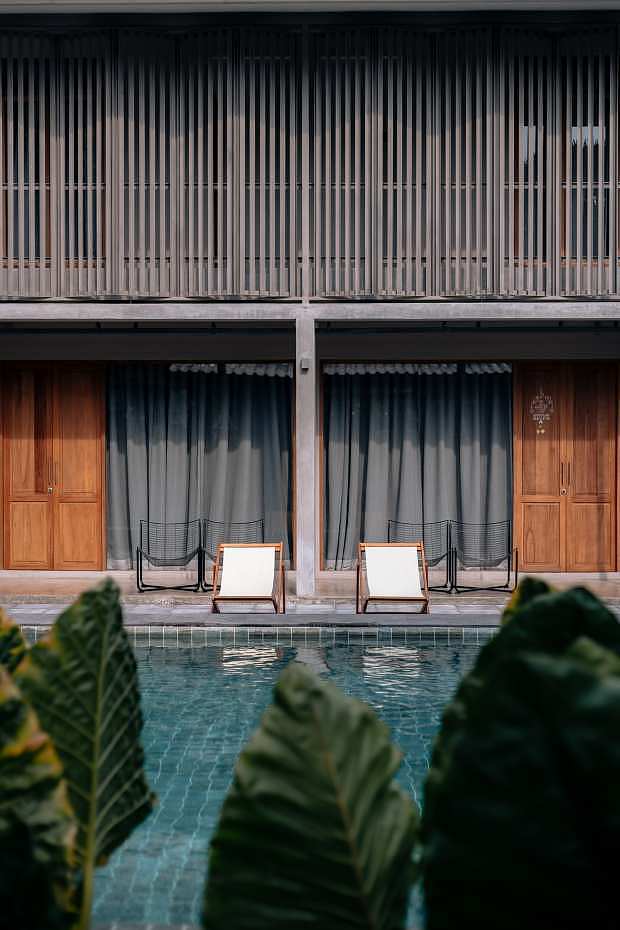


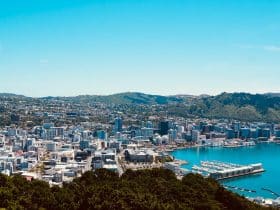


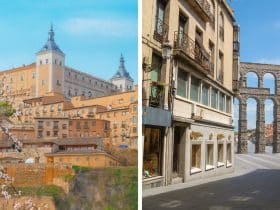
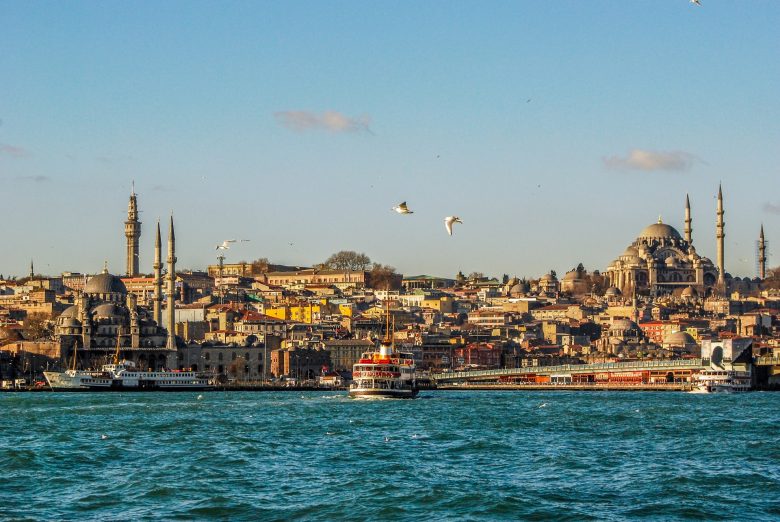








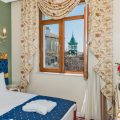


























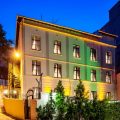


























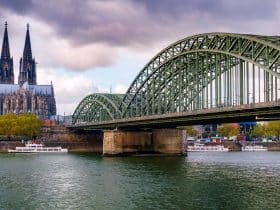

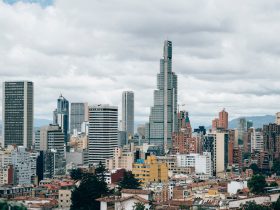
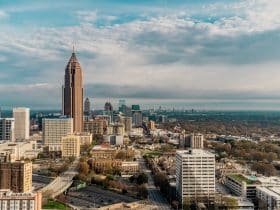

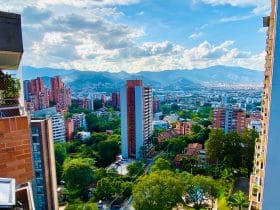
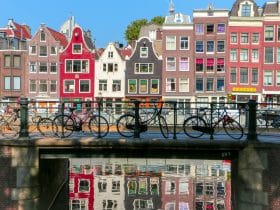


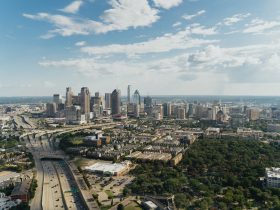

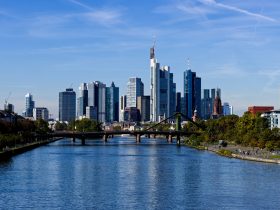


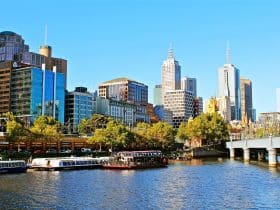

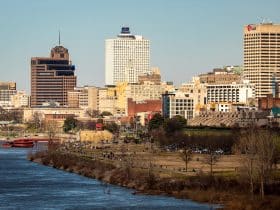
Leave a Reply
View Comments